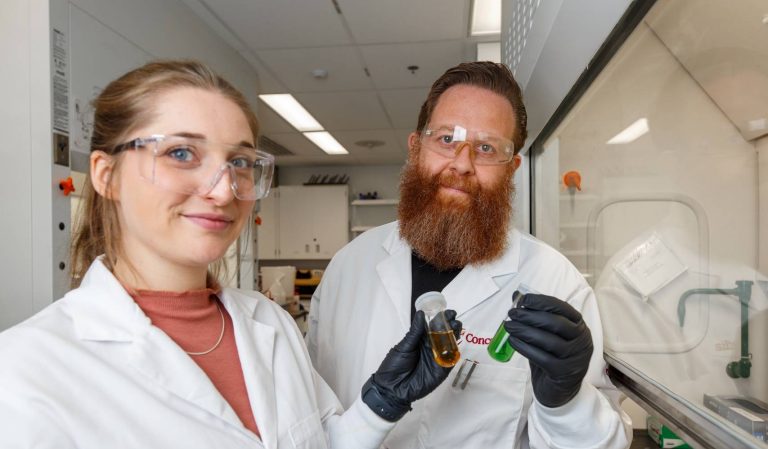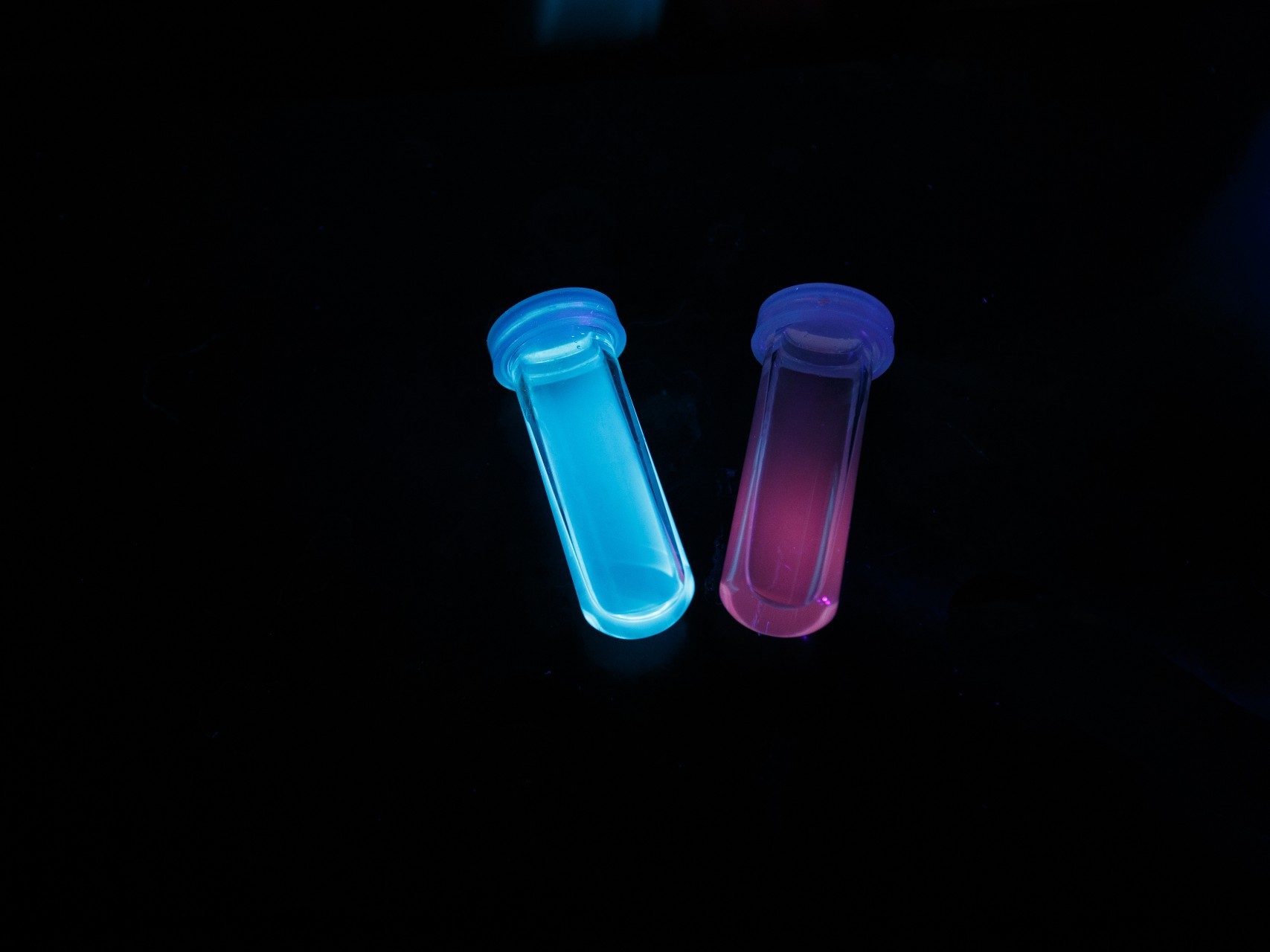Organic nanosensors may be able to detect harmful pesticides thanks to new Concordia research

Researchers at Concordia have developed a new system using tiny nanosensors called carbon dots to detect the presence of the widely used chemical glyphosate.
Glyphosate is a pesticide found in more than 750 agricultural, forestry, urban and home products, including Monsanto’s popular weed-killer Roundup. It is also controversial: studies have linked its overuse to environmental pollution and cancer in humans. Its sale is banned or restricted in dozens of countries and jurisdictions, including Canada.
The researchers’ system relies on the carbon dots’ chemical interaction with glyphosate to detect its presence. Carbon dots are exceedingly small fluorescent particles, usually no more than 10 or 15 nanometres in size (a human hair is between 80,000 and 100,000 nanometres). But when they are added to water solutions, these nanomaterials emit blue and red fluorescence.
The researchers employed an analysis technique called a ratiometric self-referencing assay to determine glyphosate levels in a solution. The red fluorescence emitted by the carbon dots when exposed to varying concentrations of the chemical and different pH levels is compared with a control in which no glyphosate is present. In all the tests, the blue fluorescence remained unchanged, giving the researchers a common reference point across the different tests.
They observed that higher levels of glyphosate quenched the red fluorescence, which they accredited to the interaction of the pesticide with the carbon dots’ surface.
“Our system differs from others because we are measuring the area between two peaks—two fluorescent signatures—on the visible spectrum,” says Adryanne Clermont-Paquette, a PhD candidate in biology and the paper’s lead author. “This is the integrated area between the two curves. Ratiometric measurement allows us to ignore variables such as temperature, pH levels or other environmental factors. That allows us to just only look at the levels of glyphosate and carbon dots that are in the system.”
“By understanding the chemistry at the surface of these very small dots and by knowing their optical properties, we can use them to our advantage for many different applications,” says Rafik Naccache, an associate professor of chemistry and biochemistry and the paper’s supervising author.
Research assistants Diego-Andrés Mendoza and Amir Sadeghi, along with associate professor of biology Alisa Piekny, are co-authors.
 Colloidal carbon dots dispersed in water
Colloidal carbon dots dispersed in water
Starting small
Naccache says the technique is designed to detect minute amounts of the pesticide. The technique they developed is sensitive enough to be able to detect the presence of pesticide at levels as low as 0.03 parts per million.
“The challenge is always in the other direction, to see how low we can go in terms of sensitivity and selectivity,” he says.
There remains much work to be done before this technology can be used widely. But as Clermont-Paquette notes, this paper represents an important beginning.
“Understanding the interaction between glyphosate and carbon dots is a first step. If we are to move this along further, and develop it into a real-life application, we have to start with the fundamentals.”
The researchers are supported by funding from the Natural Sciences and Engineering Research Council of Canada.
Read the cited paper: “Ratiometric Sensing of Glyphosate in Water Using Dual Fluorescent Carbon Dots.”


